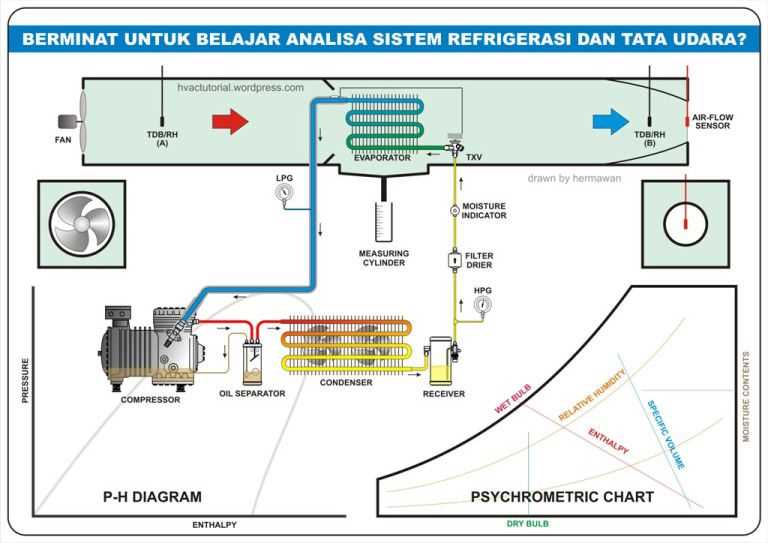
The refrigerator compressor is the most vital component of your fridge, responsible for maintaining the right temperature inside the appliance. As the heart of your refrigerator, the compressor pumps refrigerant gas throughout the system, ensuring efficient cooling and preservation of food. Understanding the circuit diagram of the compressor can help you diagnose and troubleshoot any potential issues that may arise.
A refrigerator compressor circuit diagram illustrates how different electrical components, such as the motor, starting relay, overload protector, and capacitor, are connected to create a functioning compressor system. The motor, typically powered by electricity, drives the piston inside the compressor, which compresses the refrigerant gas. The starting relay and capacitor provide an initial boost of power to start the motor, while the overload protector prevents overloading and overheating of the compressor.
By studying the refrigerator compressor circuit diagram, you can gain insights into how the electrical components work together to ensure the proper functioning of your fridge. This knowledge can be helpful when troubleshooting cooling issues, motor malfunctions, or electrical problems. With a better understanding of the circuitry, you can effectively test and replace faulty components, saving time and money on repairs.
In conclusion, the refrigerator compressor circuit diagram is a valuable tool for understanding the inner workings of your fridge’s most important component. By familiarizing yourself with the various electrical connections and components, you can become better equipped to diagnose and fix any issues that may arise. Whether you are a professional technician or a homeowner looking to troubleshoot your own appliance, the circuit diagram provides a roadmap to success in keeping your fridge running smoothly and your food fresh.
Understanding Refrigerator Compressor Circuits

The refrigerator compressor circuit is an essential part of the refrigerator’s cooling system. It is responsible for compressing the refrigerant gas and facilitating the heat exchange process, allowing the refrigerator to cool down and maintain a low temperature. To better understand how the compressor circuit works, let’s break it down into its main components.
Compressor: The compressor is the heart of the refrigeration system. It is an electric motor that drives a piston or scroll, which compresses the refrigerant gas. The compressed gas then moves through the system, releasing heat and cooling down.
Condenser: The condenser is a heat exchanger located outside the refrigerator. It receives the high-pressure, high-temperature refrigerant gas from the compressor and cools it down by transferring the heat to the surrounding air or water. As the gas cools, it condenses into a liquid state.
Note: The compressor and condenser are often combined into a single unit in small refrigerators, known as a condensing unit.
Expansion device: After leaving the condenser, the high-pressure liquid refrigerant passes through an expansion device, which reduces its pressure and temperature. This expansion allows the refrigerant to evaporate inside the evaporator.
Evaporator: The evaporator is another heat exchanger located inside the refrigerator. As the low-pressure refrigerant liquid enters the evaporator, it absorbs heat from the surrounding air, causing it to evaporate and turn back into a gas. This process cools down the air inside the refrigerator.
Thermostat: The thermostat senses the temperature inside the refrigerator and controls the compressor’s operation. When the temperature rises above a set point, the thermostat signals the compressor to turn on. Once the desired temperature is reached, the compressor is turned off.
In summary, the refrigerator compressor circuit works by compressing the refrigerant gas, cooling it down in the condenser, expanding it in the expansion device, and evaporating it in the evaporator to cool the refrigerator. The thermostat regulates the compressor’s operation to maintain the desired temperature. Understanding this circuit can help troubleshoot and diagnose potential issues with the refrigerator’s cooling system.
Basics of Refrigeration Systems

In a refrigerator, the main component responsible for cooling is the refrigeration system. This system consists of several key components, including the compressor, condenser, expansion valve, and evaporator. Understanding the basic principles of how these components work together is essential for troubleshooting and repairing refrigerator systems.
The compressor is the heart of the refrigeration system. It is responsible for compressing the refrigerant gas to increase its temperature and pressure. The high-pressure gas then flows to the condenser, where it releases heat to the surrounding environment and condenses into a liquid. The liquid refrigerant passes through the expansion valve, which controls the flow and reduces the pressure of the refrigerant, causing it to evaporate. The evaporation process absorbs heat from the refrigerator’s interior, cooling it down. The low-pressure vapor then returns to the compressor to repeat the cycle.
The refrigeration system operates based on the principles of thermodynamics. Heat always flows from a region of higher temperature to a region of lower temperature. By manipulating the pressure and temperature of the refrigerant, the system can transfer heat from the interior of the refrigerator to the outside environment. This allows the refrigerator to maintain a lower temperature inside, keeping food and other perishable items fresh.
Efficiency is a crucial aspect of refrigeration systems. A well-designed system should maximize cooling efficiency while minimizing energy consumption. Proper insulation and sealing of the refrigerator enclosure, along with regular maintenance and cleaning of the condenser coils, can help optimize the system’s performance. Additionally, choosing a refrigerator with energy-efficient components and settings can lead to significant energy savings over time.
Understanding the basics of refrigeration systems is essential for homeowners and technicians alike. It allows for better troubleshooting and maintenance, ensuring the reliable and efficient operation of refrigerators and other cooling appliances.
Importance of Compressor Circuit in Refrigerators
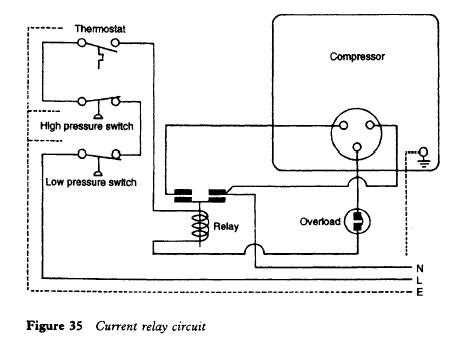
The compressor circuit is one of the most important components in a refrigerator. It plays a crucial role in the cooling process and ensuring the proper functioning of the appliance. The compressor is responsible for compressing the refrigerant gas, which helps in removing heat from the refrigerator’s interior, thereby reducing the temperature to the desired level.
The compressor circuit consists of several key elements, including the compressor unit itself, the condenser, the evaporator, and the expansion valve. These components work together to facilitate the refrigeration cycle and maintain the ideal temperature inside the refrigerator. Without a properly functioning compressor circuit, the refrigerator would not be able to cool effectively and keep food fresh for an extended period.
The compressor unit is the heart of the refrigeration system. It compresses the low-pressure refrigerant gas into high-pressure gas, which increases its temperature. This heated gas then flows to the condenser, where it releases heat to the surrounding environment, causing the gas to condense into a high-pressure liquid. The liquid refrigerant then passes through the expansion valve, which regulates its flow into the evaporator.
Inside the evaporator, the liquid refrigerant evaporates, absorbing heat from the refrigerator’s interior. This process cools down the air inside the refrigerator, and the evaporated refrigerant is then returned to the compressor to repeat the cycle. The compressor circuit ensures that this refrigeration cycle continues uninterrupted, maintaining the desired temperature and preserving food properly.
Overall, the compressor circuit is a critical component in refrigerators, as it enables the cooling process and ensures efficient operation. Regular maintenance and proper care of the compressor circuit are essential to prevent any malfunctions or breakdowns, as these can lead to compromised cooling performance and potential food spoilage. Understanding the importance of the compressor circuit helps users appreciate the necessity of maintaining their refrigerators and ensuring optimal functioning at all times.
Components of a Refrigerator Compressor Circuit
The compressor circuit is one of the essential components of a refrigerator. It is responsible for compressing the refrigerant and circulating it through the cooling system. The circuit consists of several key components that work together to ensure efficient and reliable operation.
Refrigerant: The refrigerant is a fluid that absorbs heat from the interior of the refrigerator and releases it to the exterior. It flows through the compressor circuit, changing its state from a gas to a liquid and back again. Commonly used refrigerants include R134a and R410a, which have specific properties suitable for cooling applications.
Compressor: The compressor is the heart of the refrigeration system. It is a motor-driven pump that compresses the refrigerant, raising its pressure and temperature. The compressor is typically driven by an electric motor and is responsible for maintaining the flow of refrigerant in the circuit.
Condenser: The condenser is a heat exchanger that facilitates the release of heat from the compressed refrigerant. It is located outside the refrigerator and is usually cooled by air or water. As the refrigerant passes through the condenser, it gives off heat and condenses into a liquid form.
Expansion Valve: The expansion valve is a small device located between the condenser and evaporator. Its function is to regulate the flow of refrigerant into the evaporator. The valve creates a pressure drop, causing the refrigerant to expand and evaporate, absorbing heat from the surroundings.
Evaporator: The evaporator is another heat exchanger located inside the refrigerator. It allows the refrigerant to evaporate and cool the interior of the fridge. As the refrigerant evaporates, it absorbs heat, creating a cold environment for food storage. The evaporator is typically equipped with a fan to enhance air circulation.
Controller: The controller is an electronic component that monitors and regulates the operation of the compressor circuit. It receives input from sensors and adjusts the compressor speed or cycling based on the temperature inside the fridge. The controller ensures optimal cooling performance and energy efficiency.
- Refrigerant
- Compressor
- Condenser
- Expansion Valve
- Evaporator
- Controller
In summary, the refrigerator compressor circuit consists of the refrigerant, compressor, condenser, expansion valve, evaporator, and controller. These components work together to compress, cool, and circulate the refrigerant, providing the desired cooling effect inside the refrigerator. Each component plays a crucial role in maintaining the efficiency and reliability of the cooling system.
Working Principles of a Refrigerator Compressor Circuit
Refrigerator compressor plays a crucial role in the cooling process of a refrigerator. It is responsible for compressing the refrigerant and circulating it through the system to remove heat from the interior of the refrigerator. Understanding the working principles of a refrigerator compressor circuit is essential to grasp how a refrigerator operates.
1. Compressor
The compressor is the heart of the refrigerator circuit. It is an electrically driven device that compresses the refrigerant gas, which increases its temperature and pressure. The compressor consists of a motor and a pump. The motor is responsible for driving the pump, which compresses the refrigerant and circulates it through the system.
The compressor in a refrigerator functions based on the principle of Boyle’s law and the refrigeration cycle. Boyle’s law states that when the volume of a gas decreases, its pressure increases, and vice versa. This principle is applied in the compression process of the refrigerator circuit.
2. Refrigerant
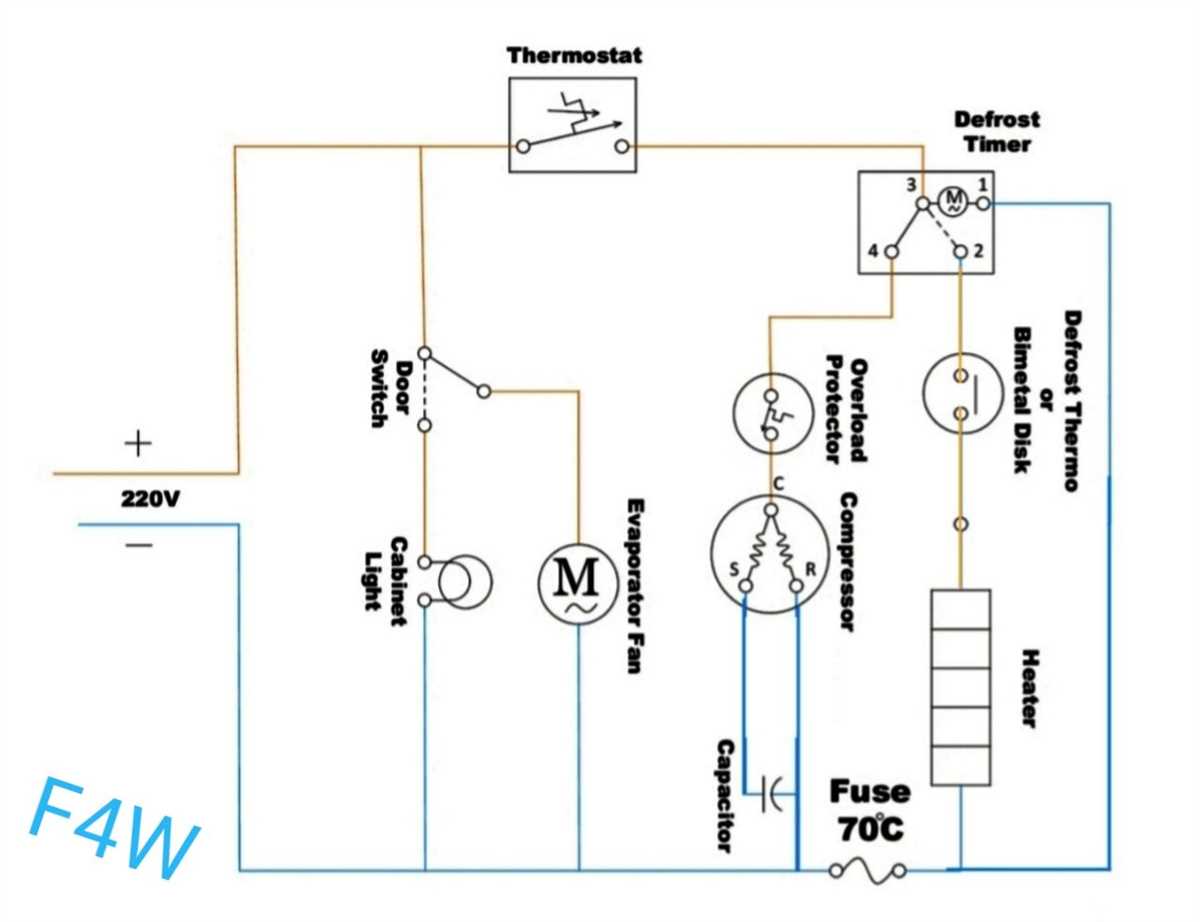
The refrigerant is a chemical compound that undergoes phase changes to transfer heat from one environment to another. It absorbs heat energy from the refrigerator’s interior when it evaporates and releases heat energy to the surroundings when it condenses. The refrigerant plays a crucial role in the refrigeration cycle, which is a continuous process of heat transfer.
The common refrigerants used in refrigerator compressor circuits are hydrofluorocarbons (HFCs) or hydrochlorofluorocarbons (HCFCs). These refrigerants have desirable thermodynamic properties and are less harmful to the environment compared to the older generation refrigerants like chlorofluorocarbons (CFCs) and hydrochlorofluorocarbons (HCFCs).
3. Thermostat and Expansion Valve
The thermostat is a crucial component in the refrigerator compressor circuit as it controls the temperature inside the refrigerator. It senses the temperature and signals the compressor to start when the temperature rises above the desired level and stop when the temperature reaches the desired level.
The expansion valve is responsible for regulating the flow of the refrigerant into the evaporator coils. It acts as a restriction that causes a pressure drop in the refrigerant, allowing it to evaporate and absorb heat from the refrigerator’s interior.
In conclusion, a refrigerator compressor circuit operates based on the principles of Boyle’s law and the refrigeration cycle. The compressor compresses the refrigerant, increasing its temperature and pressure, while the refrigerant undergoes phase changes to transfer heat energy. The thermostat and expansion valve play crucial roles in regulating the temperature and flow of the refrigerant, respectively.
Common Issues and Troubleshooting of Compressor Circuits
Compressor circuits are an essential component of refrigerator systems, responsible for compressing refrigerant gases and maintaining the desired temperature inside the refrigerator. However, like any electrical circuit, compressor circuits can experience various issues that can affect their performance and even cause complete failure. It is important to identify and troubleshoot these issues promptly to ensure the proper functioning of the refrigerator.
One common issue with compressor circuits is a faulty compressor motor. This can result in the compressor failing to start or running intermittently. To troubleshoot this issue, it is necessary to check the compressor motor for any physical damage or overheating. Testing the motor with a multimeter can also help determine if it is receiving the correct voltage and if it is functioning properly. If the compressor motor is deemed faulty, it will need to be replaced.
Another issue that can affect compressor circuits is a faulty start relay or capacitor. The start relay is responsible for providing the initial boost of power to start the compressor, while the capacitor helps maintain a steady supply of electricity. If either of these components is faulty, the compressor may struggle to start or fail altogether. Testing these components with a multimeter can help identify any issues, and replacing them may be necessary to resolve the problem.
- A refrigerant leak can also impact the performance of compressor circuits. If a leak occurs, it can cause a decrease in the refrigerant level, leading to inadequate cooling and potential compressor failure. A visual inspection of the refrigerant lines can help identify any signs of leakage, such as oil stains or frost accumulation. If a leak is detected, it is crucial to repair the damaged section and recharge the refrigerant.
- Electrical issues, such as loose connections or overloaded circuits, can also impact the performance of compressor circuits. Inspecting the electrical connections and ensuring they are tight and secure can help prevent any power interruptions. Additionally, avoiding overloading the circuit by connecting too many appliances to the same circuit can help prevent any electrical issues.
- Faulty temperature control boards or thermostats can also cause issues with compressor circuits. If these components are not accurately detecting the temperature within the refrigerator, it can lead to improper cooling or overworking of the compressor. Testing these components and replacing them if necessary can help resolve the issue.
In conclusion, there are several common issues that can occur with compressor circuits in refrigerators. Prompt troubleshooting and identification of these issues is crucial to prevent further damage and ensure the proper functioning of the refrigerator. Regular maintenance and inspections can help prevent these issues from occurring and extend the lifespan of the compressor circuits.
Maintenance and Safety Tips for Refrigerator Compressor Circuits
Maintaining the compressor circuit in your refrigerator is essential for its proper functioning and longevity. Here are some important maintenance and safety tips to keep in mind:
Regular Cleaning
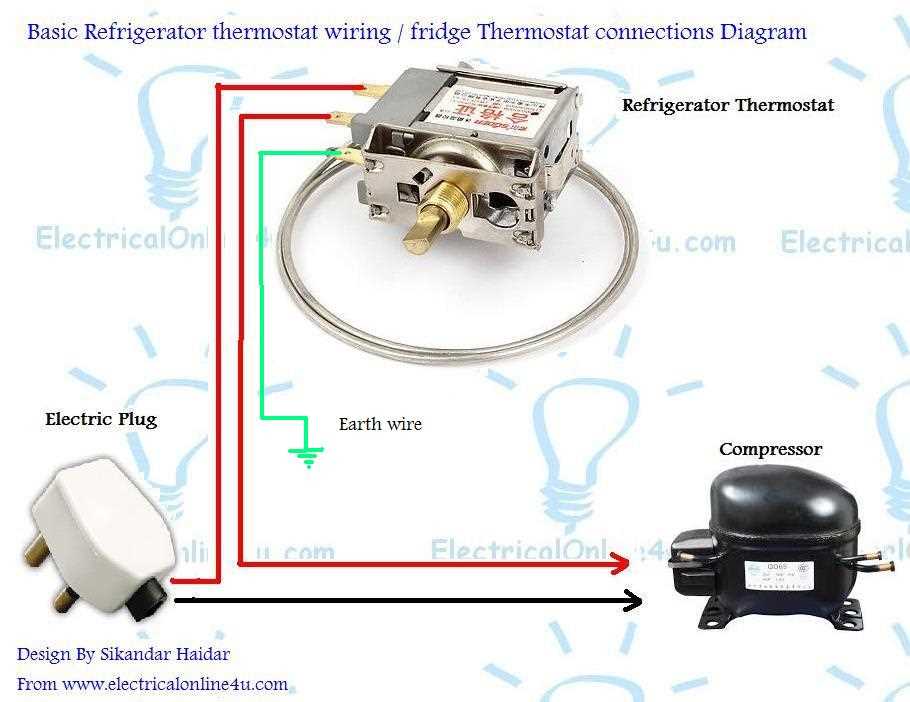
Regularly cleaning the coils and fan of the compressor can help improve its efficiency and prevent overheating. Use a soft brush or vacuum cleaner to remove dust and debris that may accumulate on the coils and fan. Make sure to unplug the refrigerator before cleaning to avoid any electrical hazards.
Proper Ventilation
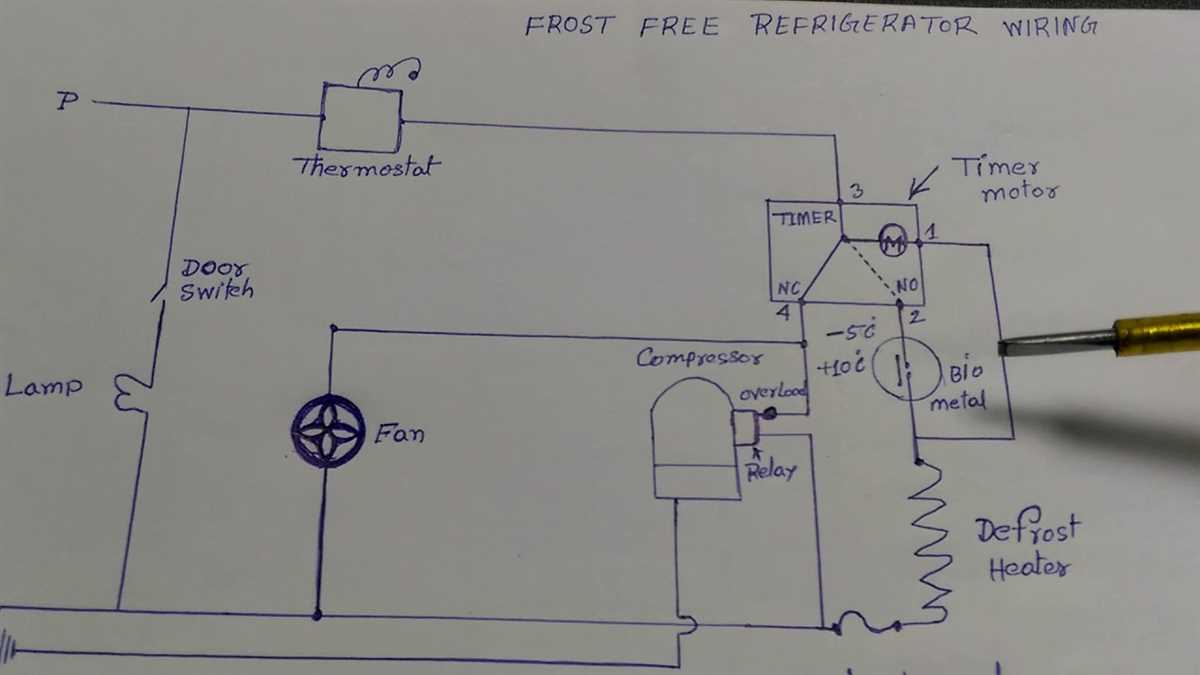
Ensure that your refrigerator is properly ventilated to prevent the compressor from overheating. Avoid placing the refrigerator in a confined space or against a wall. Allow at least a few inches of space around the refrigerator to allow for proper airflow.
Regular Inspections
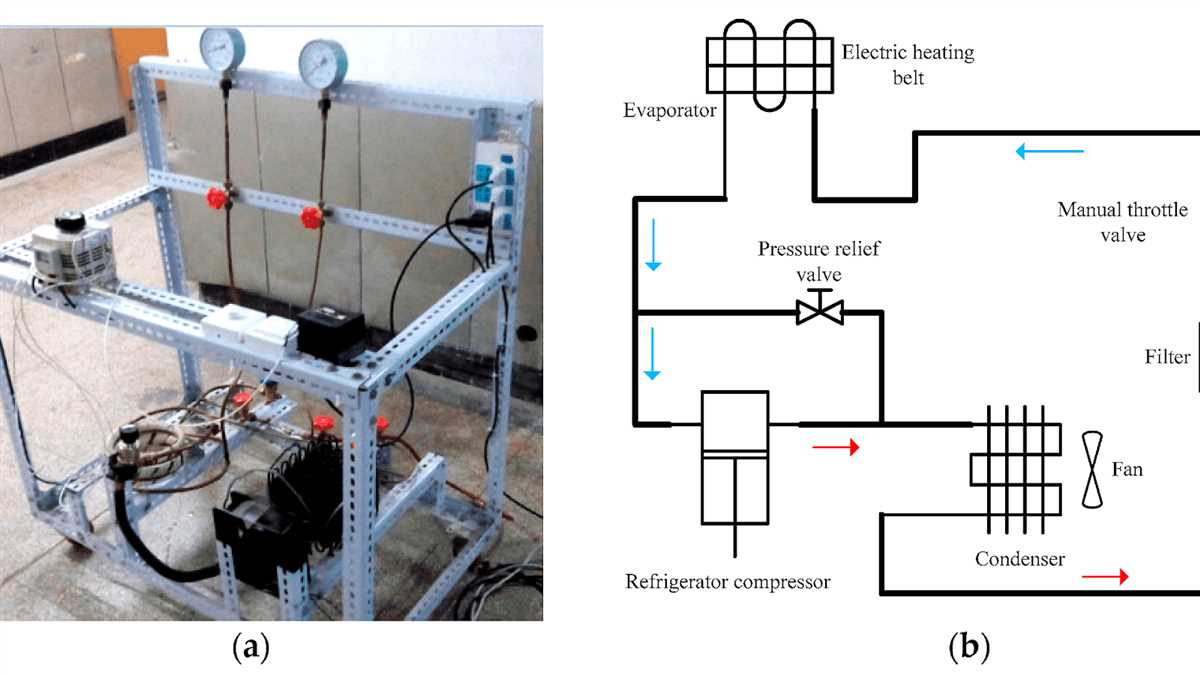
Regularly inspect the compressor circuit for any signs of damage, such as frayed wires or loose connections. If you notice any issues, it is important to address them promptly to avoid potential electrical hazards and ensure the proper functioning of the compressor.
Avoid Overloading
Avoid overloading your refrigerator with excessive amounts of food, as this can put additional strain on the compressor and lead to overheating. Use the refrigerator’s storage capacity wisely and avoid blocking airflow with items placed too close to the compressor.
Professional Maintenance
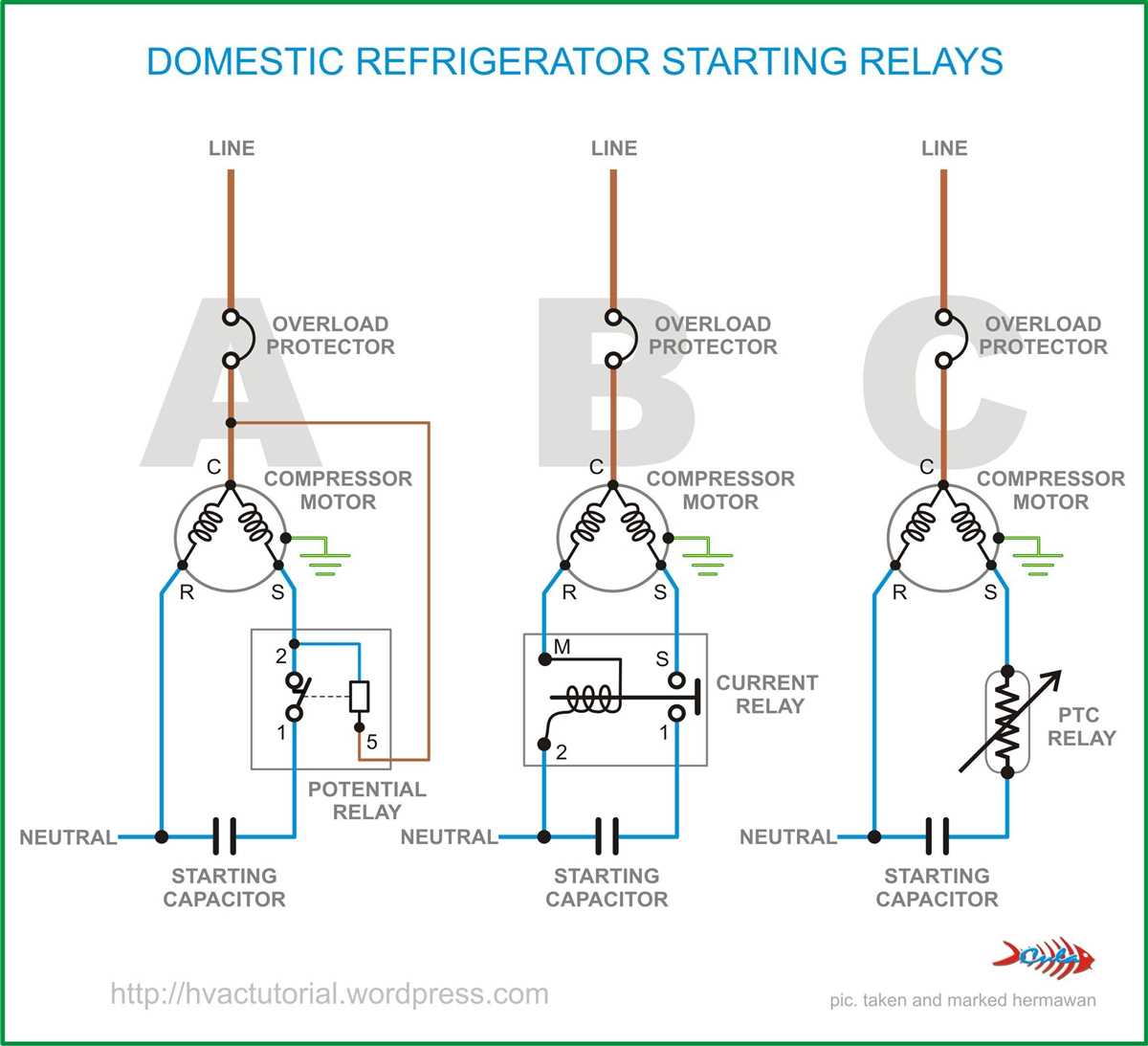
Consider scheduling regular professional maintenance for your refrigerator, including the compressor circuit. A trained technician can perform a thorough inspection, clean the components, and address any potential issues before they become major problems.
By following these maintenance and safety tips, you can ensure the optimal performance of your refrigerator compressor circuit and extend its lifespan. Remember to always prioritize safety and seek professional assistance when needed.